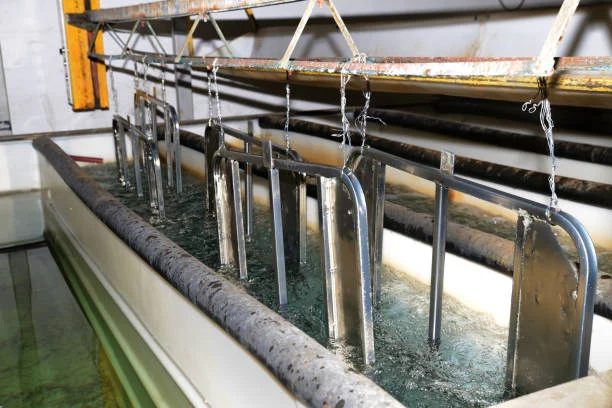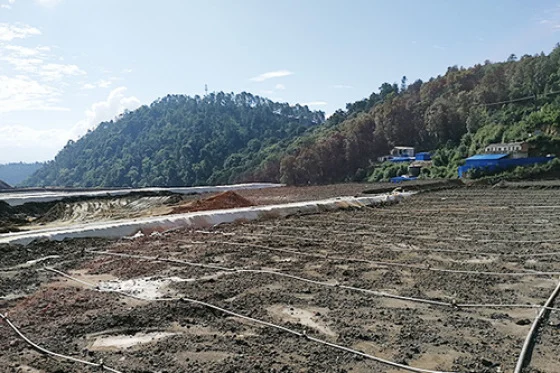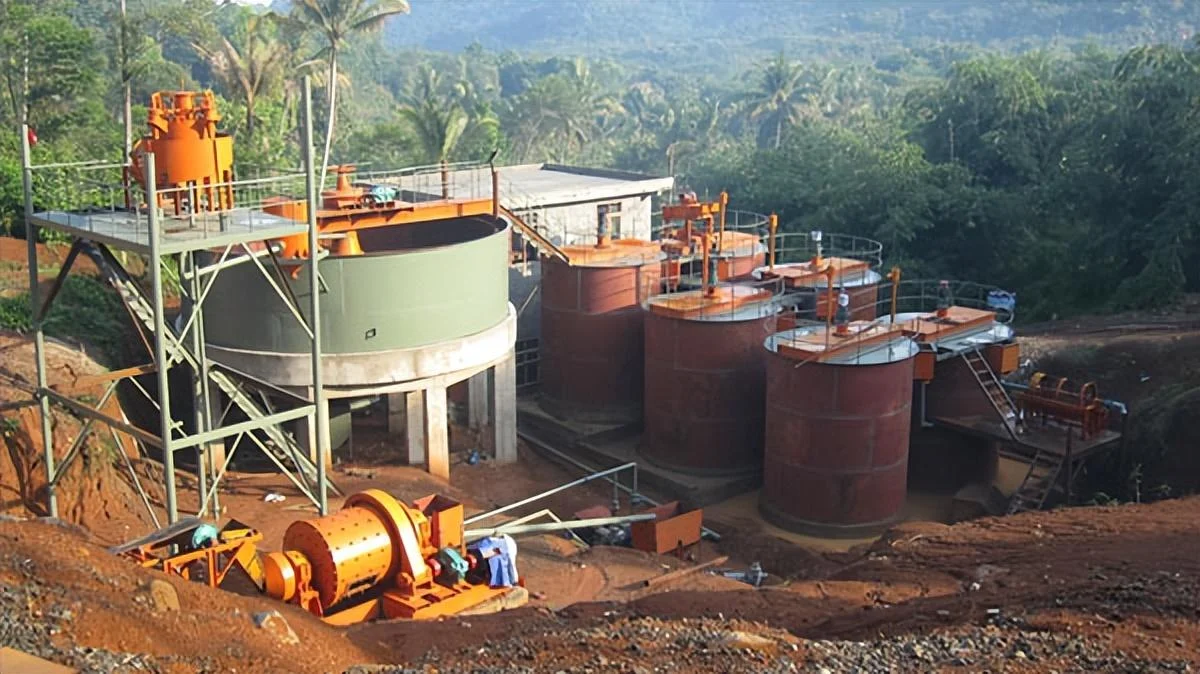
In Gold Cyanidation Plants, although some Cyanide Wastewater is recycled, there are still some cyanide wastewater or cyanide residues being discharged. Cyanide is highly toxic, so professional treatment of this cyanide wastewater is essential before discharge to avoid environmental pollution and damage to human and animal health. Currently, the following are common cyanide wastewater treatment methods in gold cyanidation plants.
Treatment Methods for Medium and Low Concentration Cyanide Wastewater
Alkaline Chlorination Method
The alkaline chlorination method is a widely used approach. In this method, a chlorine oxidant with a high charge oxidation state is added to the alkaline cyanide wastewater. Common oxidants include ClO₂, Cl₂ (gas and liquid), bleaching powder, sodium hypochlorite, calcium hypochlorite, and chlorite. In an alkaline solution, OCl⁻ or a high - charge chloride oxidation is usually generated. First, the cyanide is oxidized to cyanate, and then further oxidized to carbon dioxide and nitrogen.
Advantages: The reagents are widely available and inexpensive. The treatment effect is good, and the equipment used is simple, which is easy to automate.
Disadvantages: Since the generated cyanogen chloride is toxic, it is very harmful to operators. Cyanogen chloride in contact with water can produce corrosive fumes, causing serious damage to equipment.
Inco Method
The Inco method was developed by Inco Ltd. in 1982. It mainly involves adding a mixture of SO₂ and air to the cyanide wastewater and controlling the pH value between 8 - 10. Divalent copper ions catalyze the oxidation of cyanide in the wastewater.
Advantages: The Inco method is simple, and the equipment used is not complex. The treatment effect is generally better than the chlorination process (without considering the toxicity of thiocyanate). The reagent sources are relatively wide, and the investment is lower than that of the alkaline chlorination process.
Disadvantages: The Inco method has difficulty in oxidizing SCN⁻, and SCN⁻ can dissociate CN⁻ later, so it is not suitable for treating cyanide wastewater with high - concentration SCN⁻. SO₂ is also an air pollutant and may escape and leak during the reaction, polluting the environment.
H₂O₂ Oxidation Method
Under the conditions of a pH value of 9.5 - 11. normal temperature, and copper (Cu²⁺) ions as a catalyst, H₂O₂ oxidizes cyanide to generate CNO⁻. CNO⁻ will be further hydrolyzed to generate NH₄⁺ and CO₃²⁻, and the hydrolysis rate depends on the pH.
Advantages: The treatment effect of cyanide wastewater is good, and the process is simple. The oxidation method is suitable for treating low - concentration cyanide wastewater, and the cyanide concentration after treatment is less than 0.5mg/L.
Disadvantages: H₂O₂ is toxic and corrosive, so its transportation and use are dangerous. The oxidation method has difficulty in oxidizing SCN⁻ in the wastewater, and the treated wastewater is still toxic.
Ozone Oxidation Method
Ozone has extremely strong oxidation ability, with an electrode potential of 2.07mV, second only to fluorine. It can easily decompose components that cannot be decomposed by other oxidants. The chemical reaction mechanism of the ozone oxidation process is that ozone reacts with cyanide to generate cyanate, which is then hydrolyzed to generate nitrogen and carbonate.
Advantages: It only requires equipment to generate ozone and does not need to purchase and transport chemicals. The process is simple and convenient, with no secondary pollution.
Disadvantages: Due to the high cost of ozone generators and the difficulty of equipment maintenance, there are some limitations in industrial applications. The ozone oxidation method consumes a large amount of electricity, so it is difficult to use in areas with insufficient power.
Treatment Methods for High - Concentration Cyanide Wastewater
Acidification Method
The acidification method can treat most of the high - concentration cyanide solutions (60×10⁻⁶ + NaCN) discharged from factories. The concentration of free cyanide ions in the solution can be reduced to 1×10⁻⁶.
Advantages: It can maximize the recovery of cyanide, recycle resources, and has significant economic benefits.
Disadvantages: The one - time investment is too large, and some small and medium - sized enterprises cannot afford it. The operation is complex, and the treated pulp still has difficulty meeting the discharge standards.
Natural Degradation Method
The natural degradation method is a purification method that decomposes cyanide using natural factors such as light. It includes the effects of cyanide volatilization, decomposition, oxidation, photochemical degradation, biodegradation, precipitation, and adsorption, which is the result of a complex comprehensive effect of physical chemistry, photochemistry, and biochemistry.
Advantages: The natural purification method can achieve the purpose of removing cyanide without equipment or any chemicals, so the cost is very low.
Disadvantages: The process is very slow, and the treated wastewater cannot meet the discharge standards.
Two - Stage Precipitation Method
The two - stage precipitation method is an efficient closed - loop full - cycle method developed for small and medium - sized gold cyanidation plants with high - concentration SCN⁻ wastewater, which can achieve "zero discharge" of wastewater. The two - stage precipitation method mainly involves adding a catalyst and sufficient oxygen to the cyanide in the wastewater, and then removing the cyanide through the following reactions on the gold - bearing material.
2Cu⁺ + 2SCN⁻→Cu₂(SCN)₂↓
Ca²⁺ + SO₄²⁻→CaSO₄↓
Pb²⁺ + SO₄²⁻→PbSO₄↓
H⁺ + CN⁻→HCN
Advantages: It can remove heavy metal ions in the solution and achieve the recycling of wastewater.
Disadvantages: The first - step precipitation must be complete. Otherwise, when adding alkali, cuprous rhodanate will redissolve, affecting the treatment effect. Unprecipitated CaSO₄ can cause valve blockage.
These are the common cyanide wastewater treatment methods in gold cyanidation plants. In addition to the above cyanide - removal methods, reducing the use of cyanide in the gold cyanidation process can also reduce the discharge of cyanide wastewater.
- Random Content
- Hot content
- Hot review content
- Toxicity Assessment of Sodium Cyanide and Relevant Hazard Prevention Measures
- Sodium Isobutyl Xanthate SIBX 90%
- Ammonium Persulfate Industrial Grade 98.5%
- Food Grade Heavy Light Precipitated Calcium Carbonate Powder Granular 99%
- Phosphoric Acid 85% (Food grade)
- Pharmaceutical Grade Zinc Acetate
- Isobutyl vinyl ether 98% high purity certified Professional producer
- 1Discounted Sodium Cyanide (CAS: 143-33-9) for Mining - High Quality & Competitive Pricing
- 2Sodium Cyanide 98% CAS 143-33-9 gold dressing agent Essential for Mining and Chemical Industries
- 3Sodium Cyanide 98%+ CAS 143-33-9
- 4Anhydrous Oxalic acid 99.6% Industrial Grade
- 5Oxalic acid for mining 99.6%
- 6Soda Ash Dense / Light 99.2% Sodium Carbonate Washing Soda
- 7Reagent Grade/Industrial Grade Hydrochloric Acid min.31%
- 1Sodium Cyanide 98% CAS 143-33-9 gold dressing agent Essential for Mining and Chemical Industries
- 2High Quality 99% Purity of Cyanuric chloride ISO 9001:2005 REACH Verified Producer
- 3 High-Quality Sodium Cyanide for Leaching
- 4Powdery emulsion explosive
- 5Industry Grade Electron grade 98% Sulfuric Acid H2SO4 Sulphuric Acid Battery Acid Industrial Sulfuric Acid
- 6Colloidal emulsion explosive
- 7sodium hydrosulfide 70% flakes used Mining Industry












Online message consultation
Add comment: